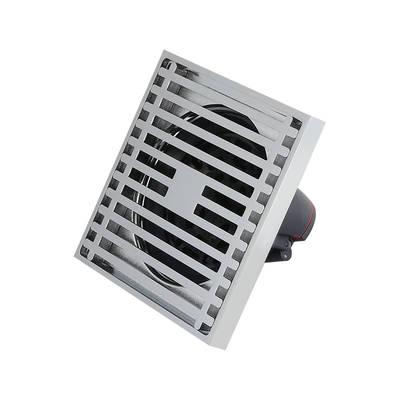A common yet often overlooked problem in residential, commercial, and industrial buildings is the presence of unpleasant odors emanating from drainage systems. One of the most efficient solutions to this issue lies in the proper design and implementation of a Stainless Steel Floor Drain. Not only do these floor drains provide durability, corrosion resistance, and aesthetic appeal, but their anti-odor capabilities are also a critical functional component that significantly improves indoor hygiene and comfort.
The odor prevention function of a Stainless Steel Floor Drain is typically realized through a combination of structural design and mechanical or water-sealing technologies. Unlike traditional drainage systems that might simply rely on gravity to move wastewater, modern stainless steel floor drains are engineered with multiple layers of protection to block the reverse flow of gases from the sewer. These gases, which often include hydrogen sulfide, methane, and ammonia, are not only unpleasant but can also pose health risks in poorly ventilated environments.
One of the most widely used anti-odor methods in a Stainless Steel Floor Drain is the water trap, often referred to as a P-trap or U-trap. This curved section of the drainpipe holds a small amount of water at all times. The water acts as a physical barrier that prevents foul-smelling gases from escaping into the room. Stainless steel enhances the performance of this component by resisting corrosion and biofilm buildup, which can compromise the seal in cheaper plastic traps over time.
In addition to water traps, many Stainless Steel Floor Drain models feature mechanical seals made from silicone or rubber. These seals act like one-way valves that allow water to pass through during drainage but close immediately afterward to block the path of gases and even pests like cockroaches. Such designs are particularly useful in dry environments or rarely used drains where water in the trap might evaporate. Mechanical seals thus offer a reliable, long-term solution for maintaining odor control even in fluctuating climate conditions.
Another innovative approach to odor prevention includes the use of magnetic or gravity-driven sealing covers. Some high-end stainless steel floor drains come equipped with internal floating devices that rise when water flows through the system and fall back to seal the drain opening when flow stops. These automatic mechanisms ensure that there is always a tight seal without the need for user intervention. The stainless steel construction of these components ensures durability and resistance to warping, rust, or damage from cleaning chemicals.
Ventilation considerations also play a role in enhancing the odor-blocking efficiency of stainless steel floor drains. Properly designed drain covers include vent holes and structured grates that manage air circulation without allowing backflow of sewer gases. Furthermore, many modern floor drain designs integrate multiple barriers, such as a combination of water seal, mechanical flap, and odor-proof gaskets, for comprehensive protection.
The quality of the stainless steel itself significantly contributes to the overall performance. High-grade stainless steels such as SUS304 or SUS316 offer excellent resistance to corrosion, which is crucial in moist, acidic, or chemical-rich environments. This ensures that the sealing components remain intact and functional over long periods of use, especially in areas like commercial kitchens, public restrooms, and basements where water exposure is constant.
Material: Brass
Type: Floor Drain
Brand: Tengxing
Customize: Yes
Model: 10*10 Cm
Water Seal Height: 7.5mm
